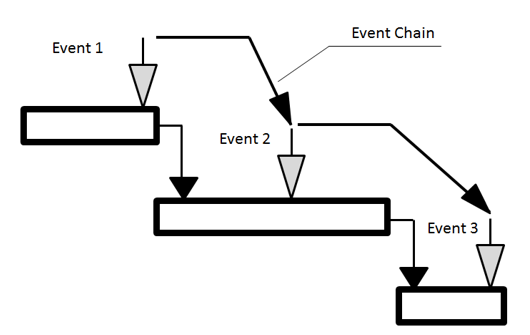In this blog, we will try and answer why you might consider using event chains as part of your project risks processes.
Federation Tower is one of largest projects under construction in Moscow, Russia. Originally, it was proposed to include two towers: West (62 stores) and East (93 stories). The two towers would be positioned on one podium with a 506 meter spire with elevators and observation desk placed between the towers. The East tower was intended to be the tallest building in Europe. The construction of the Federation Tower started in 2003 and West tower was completed in early 2008. However, construction of East tower suffered a number of major setbacks. In late 2007, the construction of the 33-34 levels was suffered technical problems, which delayed the project more than five months. In November 2008, the tower construction was suspended due to lack of funding. In the summer of 2011, work on the tower resumed, but some time was spent fixing technical problems related to the suspension of the construction. On April 2, 2012 a massive fire on 67th floor of the building caused another delay. Yet another delay occurred when a main contractor was replaced. In early 2014, the decision was made to demolish the partially erected spire, which contributed to significant cost increase. In addition, the design was changed and the number of floors increased to 97. Finally, the plan was to complete the tower in 2016.
We have outlined just a few critical events that have affected the Federation Tower project. Given the unique nature of the tower, there are a large number of technical and organizational problems affecting the project. In fact, the issues were not only a series of separate random events, but can be characterized as a number of chains of events which led to delays and extra costs. For example, the global financial crisis in 2008 led to suspension of construction, which eventually caused design changes and the decision to demolish the spire: a very complex and expensive project by itself. Is it possible to model such chains of events? Risks may cause additional mitigation and response activities and even require subprojects, which may have risks by themselves. Such event chains may lead to a dramatic escalation of project costs and major delays. Projects are becoming more complex and vulnerable to supply chain, logistics, labor, and financial risks, each one can be a trigger that creates a critical event chain that can derail projects. Because of the dramatic effect that these chains of events can have on project outcomes, we believe that modelling the impacts of possible events chains can be an important addition to project risk analysis and management.
As we have discussed, some events can cause other events, which can cause yet more events. These series of events form event chains, which may significantly affect the course of the project by creating a ripple effect through the project (Figure 8.2). Here is an example of an event chain ripple effect:
- Requirement changes cause a delay of an activity.
- To accelerate the activity, the project manager diverts resources from another activity.
- Diversion of resources causes deadlines to be missed on the other activity.
- Cumulatively, this reaction leads to the failure of the whole project.
Above we have an example of an event chain. Here is how this example can be defined using Event chain methodology:
- The event “Requirement change” will transform the activity to an excited state which is subscribed to the event “Redeploy resources”.
- Execute the event “Redeploy resources” to transfer resources from another activity. Other activities should be in a state subscribed to the “Redeploy resources” event. Otherwise resources will be not available.
- As soon as the resources are redeployed, the activity with reduced resources will move to an excited state and the duration of the activity in this state will increase.
- Successors of the activity with the increased duration will start later, which can cause a missed project deadline.
An event that causes another event is called the sender. The sender can cause multiple events in different activities. This effect is called multicasting. For example, a broken component may cause multiple events: a delay in assembly, additional repair activity, and some new design activities. Events that are caused by the sender are called receivers. Receiver events can also act as a sender for another event.
The actual effect of an event chain on a project schedule can be determined as a result of quantitative analysis. The example below illustrates the difference between event chain and independent events. Monte Carlo simulations were used to perform the analysis. The project includes three activities of 5 days each. Each activity is affected by the event “restart activity” with a probability of 50%.
From this we can see that event chains can lead to higher project duration compared to independent events with the same probability and impacts. This suggests that event chains can be a source of project schedule and cost overruns as the impacts of these risk events maybe underestimated if the cumulative effect of the events chains are not accounted for.



